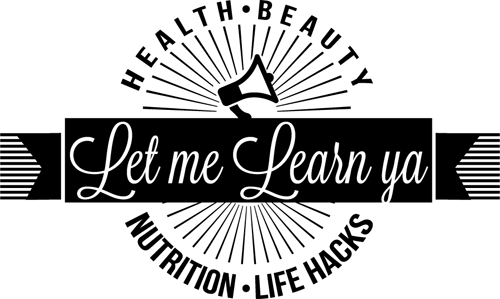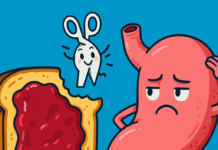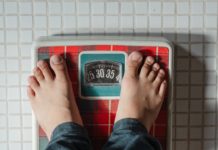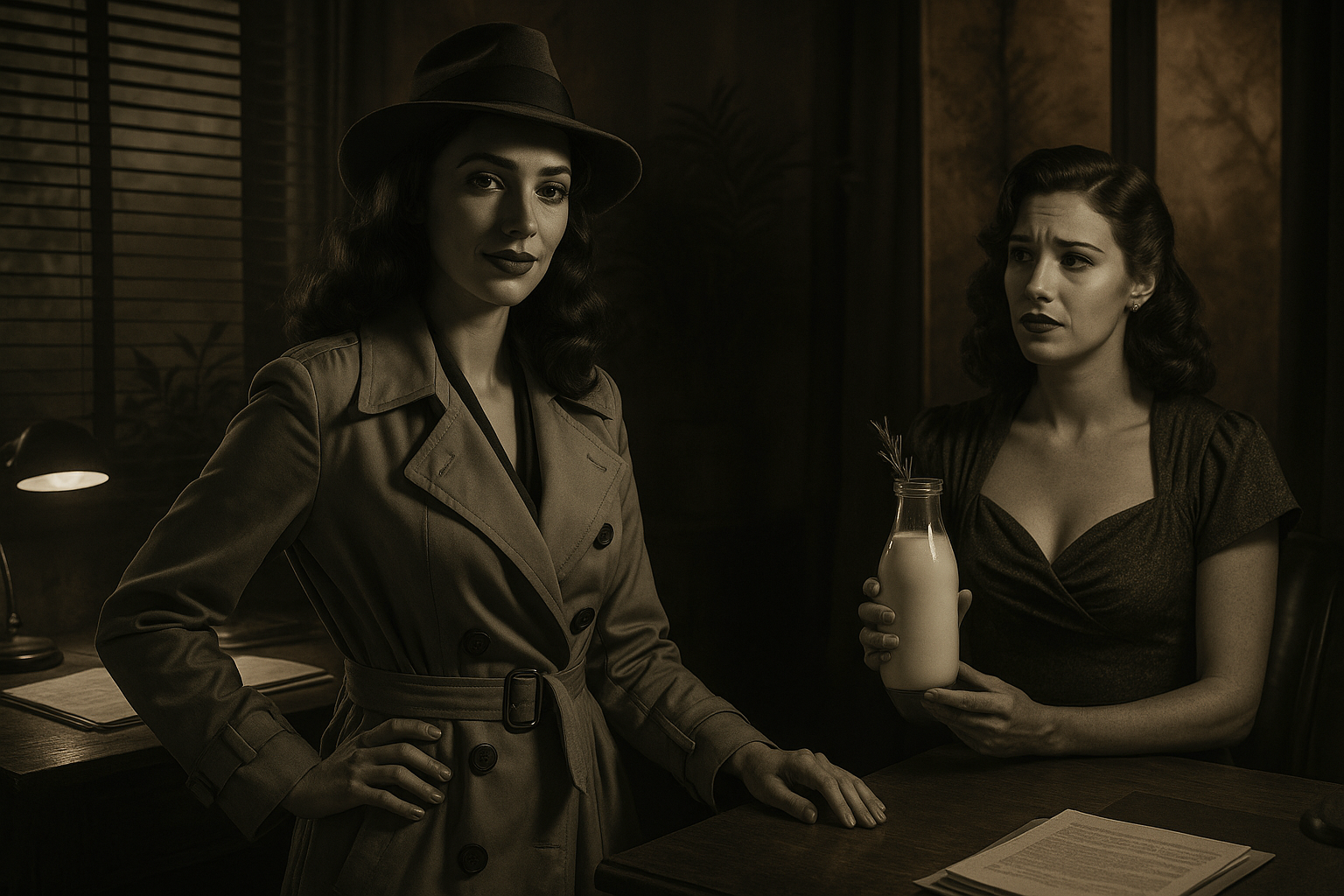Case File No. 001: The Pasteurization Alibi
Was the milk framed… or was it guilty all along?
Step into the interrogation room, sweetheart—this here’s the full case file.
You might’ve caught the highlights on TikTok: a dame with a jug of raw milk, a detective with lactose-based trust issues, and a mystery older than your grandma’s butter churn. But if you’re the type who likes their stories with footnotes and citations, you’ve come to the right place.
If you haven’t already watched the drama, check it out here:
Below, you’ll find every juicy detail behind the “Pasteurization Alibi”—the real dirt on deadly milk, swill scandals, public health crusades, and why the truth had to be heat-treated. You’ll laugh, you’ll learn, and you might just thank Louis Pasteur with your next sip.
So pour a tall glass, and dig in.
This one’s for the nerds.
Table of Contents
CLASSIFIED CASE FILE
INVESTIGATION SUMMARY
A dame came in dripping with dairy and desperation. Her claim? Pasteurization was just a cheap government shortcut and a cover-up for cow chaos. But when I opened the files, I found something else entirely: a century-spanning trail of illness, reform, backlash, and public health triumph.
KEY CLAIMS UNDER INVESTIGATION
- Pasteurization was only needed due to unsanitary farms, not because raw milk was inherently dangerous.
- The U.S. government chose pasteurization over cleaning up farms due to cost and collusion with dairy interests.
FINDINGS
YES. 19th Century Farms were Filthy.
During the Industrial Revolution, urban crowding and poor sanitation collided with changing food systems. Dairy farms, once small and local, became distant, large-scale operations. Some, like infamous “swill farms,” fed cows leftover distillery mash and housed cows in disgusting conditions. This resulted in sickly animals and toxic milk. In one Brooklyn case, 230 out of 1,811 cows died in 10 weeks. The milk they produced was blue, sour, and often laced with additives like plaster of Paris and flour to hide spoilage.
Milk Itself was Deadly.
Even under the best conditions, raw milk could harbor lethal pathogens. Before pasteurization, milk was linked to widespread disease outbreaks including tuberculosis (both bovine and human strains), brucellosis, typhoid fever, diphtheria, and streptococcus (scarlet fever). In the early 20th century:
- Infant mortality was staggeringly high: 150 to 300 deaths per 1,000 live births, with milk being the leading culprit.
- Up to 10% of TB cases in humans were attributed to milk.
- An outbreak in Illinois infected over 300,000 cattle.
- From 1912 to 1937, about 65,000 deaths in England and Wales were caused by milk-transmitted tuberculosis.
Germ Theory Emerged
Following Louis Pasteur and Robert Koch’s groundbreaking work on germ theory, scientists began testing heat treatments to destroy disease-causing bacteria. Pasteurization was first adapted to milk in 1870 by Professor N. J. Fjord in Denmark and saw commercial adoption by 1882 in Germany. By heating milk to 161°F for 15 seconds, pasteurization destroyed most pathogens without compromising taste or nutrition.
The Backlash: Dairy Farmers and Physicians Object
Pasteurization faced fierce backlash. Dairy farmers fought it as a threat to their bottom line. They resented the cost of new equipment, the time added to processing, and the regulatory oversight. Many considered it unconstitutional government overreach. Meanwhile, some physicians, while acknowledging the risks of contaminated milk, insisted that raw milk could be made safe through meticulous cleanliness. They believed pasteurization was a crude shortcut that destroyed valuable nutrients and weakened consumer trust in raw milk’s potential.
This professional opposition birthed The Harvard Plan in 1891, which laid out standards for producing “safe” raw milk. Physicians aimed to prove that if cows were healthy, handlers were illness-free, and utensils sterilized, raw milk could be as safe as pasteurized. Yet the theory failed in practice.
The Harvard Plan and Certified Milk
The Harvard Plan was formalized in 1891 and later modified by pediatrician Dr. Henry Coit. It established certified milk programs requiring rigorous oversight by physicians, veterinarians, and sanitation officers. These operations were well-meaning but costly. Milk prices doubled, and outbreaks still occurred—including tuberculosis in herds certified by the plan’s own founders. Coit, a raw milk advocate, even lost his own son to milk-borne illness. The plan’s failure undercut claims that cleanliness alone could replace pasteurization.
Advocates Emerged—Despite Industry Resistance
New York businessman and co-owner of the Macy’s department store Nathan Straus, who lost two children to tuberculosis, championed pasteurization in the U.S. He subsidized it for children in New York tenements. Illness and infant deaths dropped dramatically.
Government Involvement Wasn’t Lazy—It Was Evidence-Based
Swill farms were banned in the 1860s. Scientific research into milk hygiene increased dramatically after 1885. Governments worked with scientists to improve milk standards. Regulations weren’t rushed, they were forged through evidence and necessity. Though all these actions were taken, including The Harvard Plan, the only change that led to a dramatic decrease in infant mortality was pasteurization. The argument that pasteurization was a lazy or corrupt shortcut ignores the historical record.
The Turning Point
Between 1890 and 1910, the implementation of milk pasteurization in U.S. cities led to a significant decline in infant mortality rates. For instance, in New York City, the infant mortality rate dropped from 125.1 per 1,000 live births in 1891 to 15.8 by 1925, a reduction largely attributed to safer milk supplies. By 1938, milk-borne diseases accounted for approximately 25% of all food and water contamination outbreaks in the United States (drastically lower than it had been pre-pasteurization). And with the widespread adoption of pasteurization, this figure plummeted to less than 1% by 2016 .
In 1987, the U.S. Food and Drug Administration (FDA) banned the interstate sale of raw milk, reinforcing the commitment to public health safety . Despite this, from 1998 to 2011, there were at least 148 outbreaks linked to raw milk and raw milk products in the U.S., resulting in 2,384 illnesses, 284 hospitalizations, and two deaths . Notably, unpasteurized dairy products are consumed by a small fraction of the population but are responsible for a disproportionate number of dairy-related illnesses .
These statistics underscore that pasteurization was not merely a bureaucratic measure but a pivotal public health advancement. It transformed milk from a common vector of deadly diseases into one of the safest components of the modern diet, saving countless lives in the process.
CONCLUSION
The claim that pasteurization was only needed because farms were dirty is false. Cleanliness helped, but it wasn’t enough. The milk itself, regardless of origin, was a public health hazard. Pasteurization was the only consistent, scalable method proven to drastically reduce illness and death. It was backed by science, driven by tragedy, and resisted by those with money to lose or those lacking evidence to support anti-pasteurization claims.
VERDICT
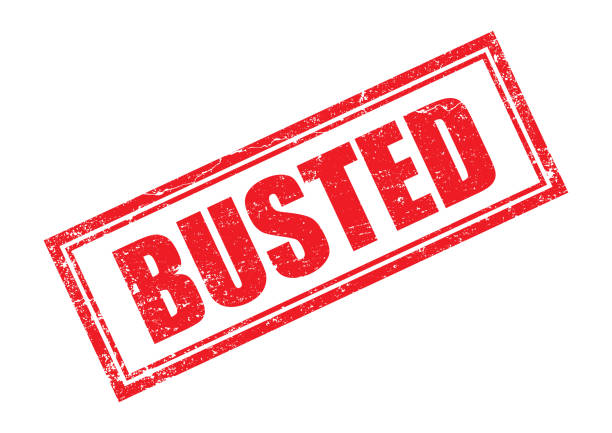
References
Steele J, Morreale D, Maynard M, et al. A Brief History of Milk Hygiene and Pasteurization. Compr Rev Food Sci Food Saf. 2022;21(8):2727-2755. doi:10.1111/1541-4337.12989
U.S. Food and Drug Administration. Milk Safety: Grade “A” Pasteurized Milk Ordinance. 2023. Accessed April 2025. https://www.fda.gov/media/140394/download
Centers for Disease Control and Prevention (CDC). Raw Milk Questions and Answers. Reviewed July 1, 2022. Accessed April 2025. https://www.cdc.gov/foodsafety/rawmilk/raw-milk-questions-and-answers.html
Coit HL. The milk problem in its sanitary aspect. JAMA. 1893;XX(1):1-5.
Straus N. The Milk Question and How to Meet It. New York, NY: Nathan Straus Publishing; 1904.
Stenn F. Milk Hygiene and the Swill Milk Scandal of the 19th Century. Med Hist Bull. 1964;12(3):115-121.
